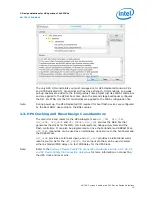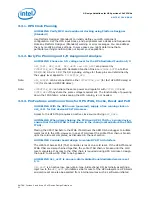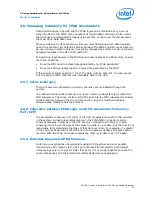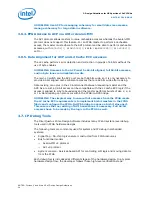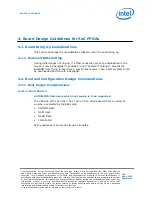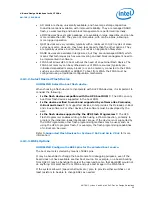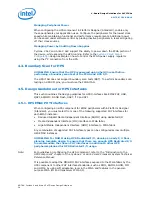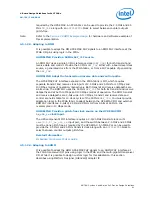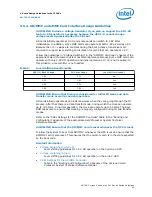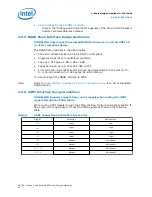
4.3.1. Early System and Board Planning
4.3.1.1. Early Power Estimation
Follow the guidelines in the Early Power Estimation website for using the PowerPlay
Early Power Estimation (EPE) spreadsheets.
In addition, consider the following guidelines for Cyclone V and Arria V SoC devices
when using the EPE spreadsheet.
GUIDELINE: Use the Main worksheet to select “Maximum” for the Power
Characteristics setting.
When estimating power consumption for the purposes of designing an adequate power
supply that can meet the maximum power requirements across process, voltage and
temperature (PVT), use the device maximum power characteristics.
GUIDELINE: Use the I/O worksheet to add HPS peripherals assigned to FPGA
I/O.
This tab is where you describe the various configurations of I/O Elements (IOEs) in
your application. Use the IO-IP tab to describe the controller IP behind each set of I/O.
For HPS peripherals assigned to FPGA I/O, add rows to the spreadsheet as necessary
to describe the different HPS peripheral I/O characteristics in your design.
GUIDELINE: Use the HPS worksheet to select the Frequency, Application, and
if applicable, the Application Mode for each CPU.
The Application/Application Mode settings for each CPU allow you to select from a list
of industry standard benchmarks to model CPU utilization in your application. You can
also select “Custom” for defining a unique set of CPU utilization parameters across the
ALUs and cache memories.
GUIDELINE: Use the HPS worksheet to update the HPS SDRAM Type,
Frequency and Width.
Note that the selection of SDRAM type also updates the I/O voltage for Bank 6A to 6B.
GUIDELINE: Use the HPS worksheet to update the HPS I/O Bank Voltage and
Peripheral Usage
Before you select Peripheral voltage from the drop-down list, ensure that you have at
least one HPS I/O Bank that is configured to the same voltage.
GUIDELINE: For Cyclone V SoC with L power option, apply the appropriate
multiplication factor when calculating the total static power.
There is no L-power option in the EPE for Cyclone V, hence you need to calculate the
total static power using the following steps:
1. Key in the design and resource utilization using the standard (non-L) part number.
2. Once total static power is obtained, apply a multiplication factor of 0.7 (for 25K-LE
and 40K-LE devices) or 0.8 (for 85K-LE and 110K-LE devices) to calculate the
lower static power for the L-power option devices.
Note:
The multiplication factor only applies to total static power and not dynamic power.
4. Board Design Guidelines for SoC FPGAs
AN-796 | 2018.06.18
AN 796: Cyclone V and Arria V SoC Device Design Guidelines
33

